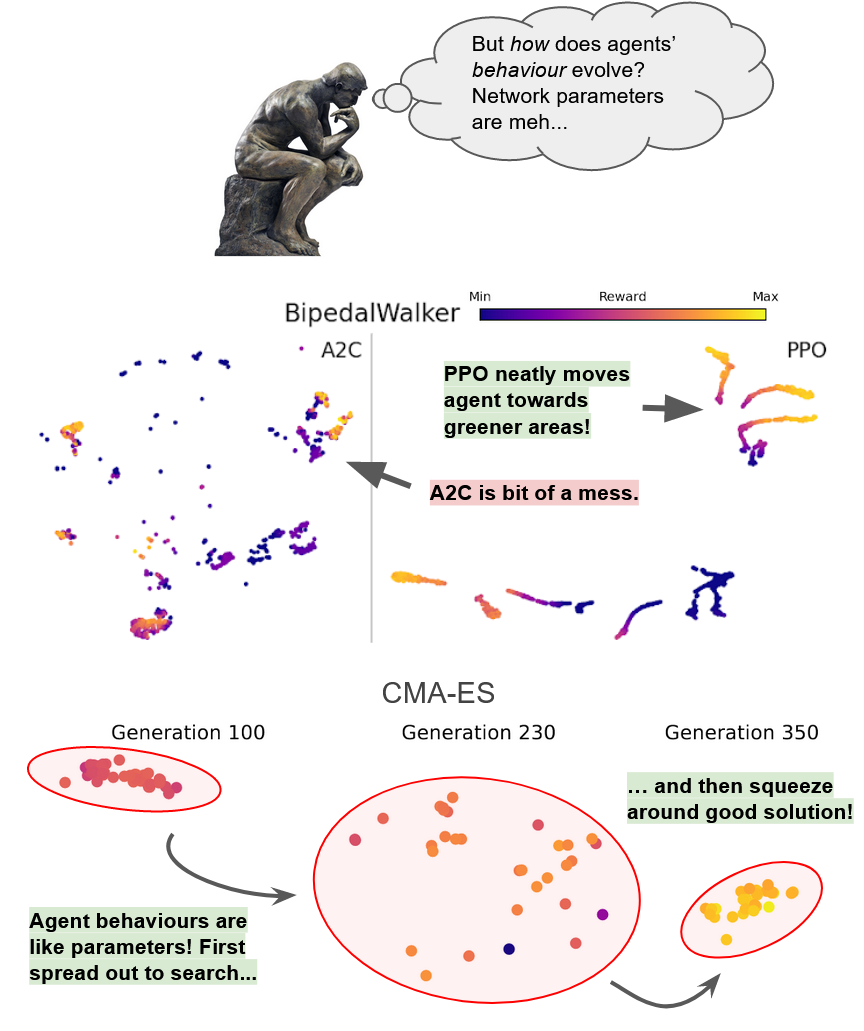Source code for the NeurIPS 2021 DRL workshop paper "General Characterization of Agents by States they Visit".
Long story short: Policy supervectors are fixed-length vectors that describe policy's behaviour (what states they visit), which can be quickly compared to each other via e.g. distance. With this one can study how a training algorithm evolves policies, as demonstrated in the image above.
prettyNEAT code is originally copied from here
deep-neuroevolution code is originally copied from here
Experiment code is in Python (tested on Python 3.7) with requirements in the `requirements.txt´.
The easiest way to run the experiments is to use conda or other env-handler:
conda create -n pivector python=3.7
conda activate pivector
pip install -r requirements.txt
./scripts/run_all.sh
All data will be stored in the same directory as the code
under different directories. The final figures/results will
be printed in the console (plot_paper.py and plot_appendix.py),
and figures will be placed under figures directory.
See ./scripts/run_all.sh for different scripts for different
experiments and how they should be ran.
Note: Experiments with novelty search have to be done separately. See deep-neuroevolution/README.md for instructions.
See plot_method_figures.py for a mostly self-contained code on running the method
in Pendulum-v0 environment with three different agents. The resulting plots will
be placed in figures, and were used in the method-figure in the main paper.
Run gridworld_experiments/experiments.py (requires numba) to create an illustration
of how policies are measured differently by measuring returns, visited states and
actions taken (`gridworld_illustration.pdf´).
The strict hardware/software requirements for running the experiments are:
- Linux-based OS (will not run correctly on Windows)
- At least 64GB of system memory
- At least ~300GB of free space available (data is stored in this same directory)
No GPU or specific CPU are required. Only required software is Python and libraries specified in requirements.txt (open and freely available).
Running all experiments takes roughly one to two weeks on a four-core Xeon Intel Xeon system.
Note that this is without parallelizing experiments, and you can easily run separate parts
by running scripts from scripts directory.
